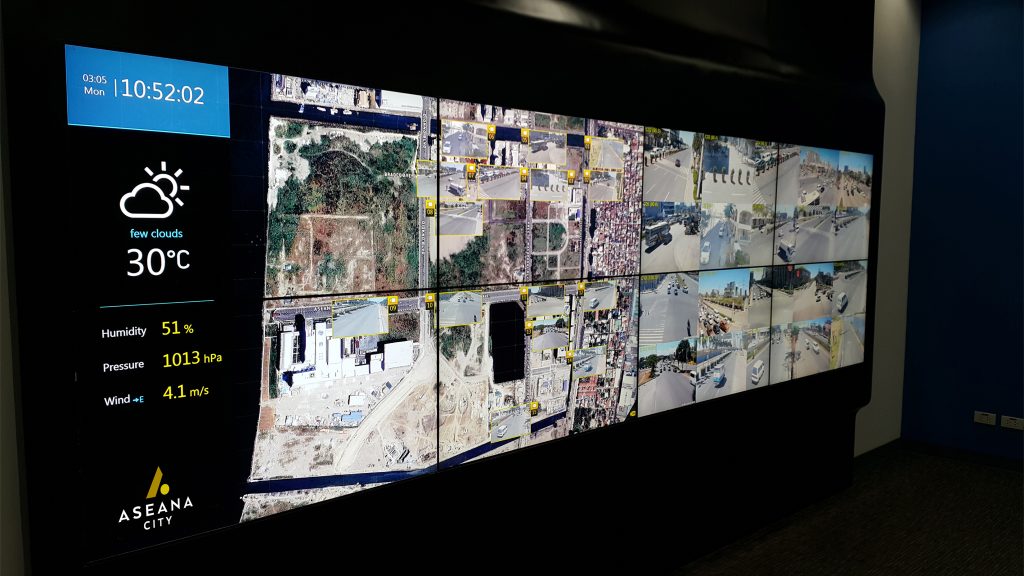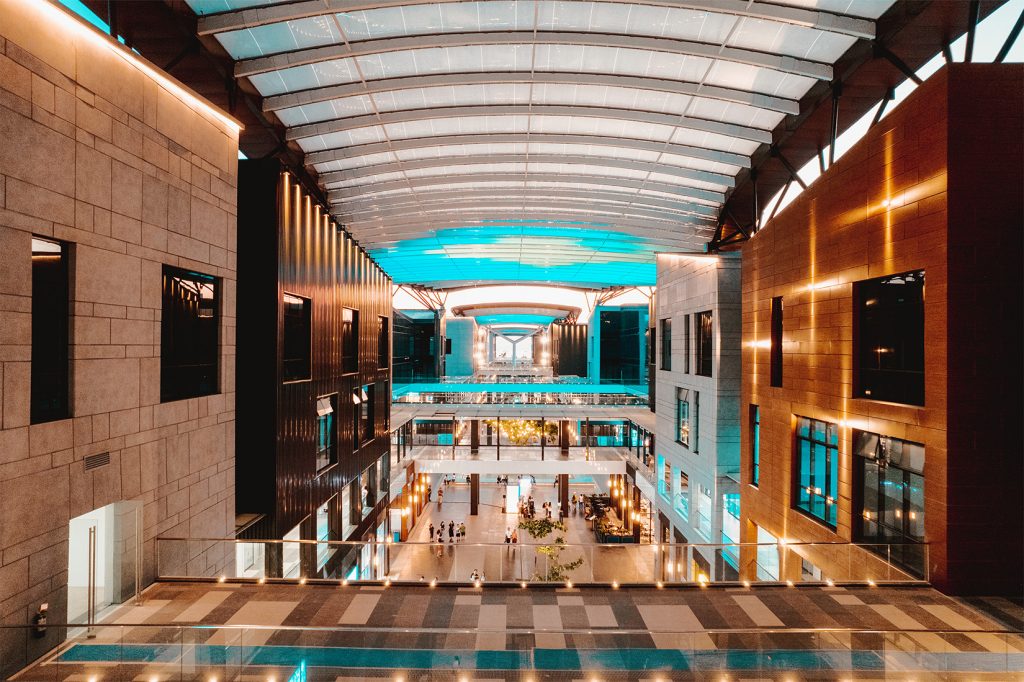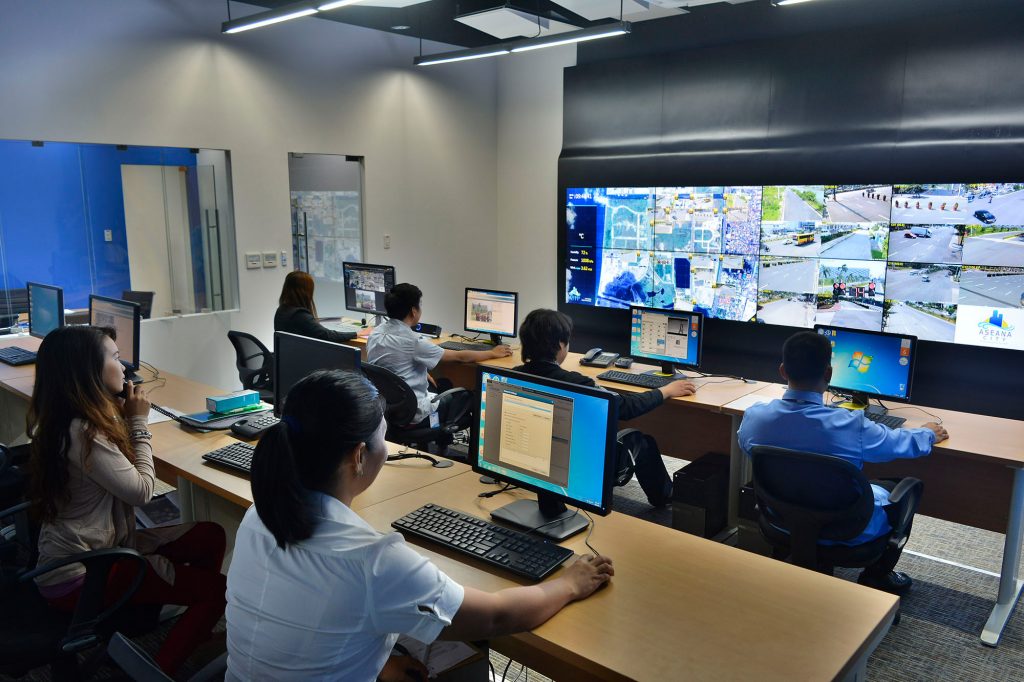Aseana City: Beyond Geography
01 August 2025
Parañaque City, Philippines — When Typhoon Ondoy struck in 2009, it inundated 80% of Metro Manila. The deluge affected millions, claimed hundreds of lives, and caused billions of pesos in economic losses.
Extreme weather events like Ondoy are no longer rare anomalies, they have grown in frequency and intensity in recent years. The Philippines sits in the Pacific typhoon belt, facing over 20 tropical cyclones a year. Just last month, four typhoons hit the country – Typhoons Bising, Crising, Dante, and Emong.
Climate scientists warn that such extreme weather events could grow more frequent as climate change accelerates. Recognizing this threat, many firms are now asking how much their operations are exposed to climate risks.
Location is More Than Geography
Location plays a defining role in a company’s risk exposure. Where facilities and offices are situated will determine whether a calamity means a brief disruption or a multi-million catastrophe.
Climate-resilient infrastructure creates long-term value by reducing downtime, protecting investments, and lowering operational costs. As architecture firm Gensler puts it, “resilient design is no longer a nice-to-have; it’s good business.”
Aseana City’s Climate Resilience
Aseana City is a prime example of climate resilience in action. The 107-hectare master-planned bayfront district was developed by D.M. Wenceslao & Associates, Inc. (DMW) with resilience at its core.
The estate remained flood-free in recent and past typhoons, including during Typhoon Ondoy’s onslaught, in stark contrast to most of Metro Manila. This did not happen by luck, but by design and proactive management.
Aseana City was built several meters above the older city grade and designed with disaster-resilient features including modern drainages, lift stations, and seawalls. The road and canal system are engineered to quickly channel stormwater out, keeping Aseana’s roads clear of deep flooding during adverse weather conditions. This ensures that offices and commercial establishments in the area always remain accessible.

Parqal’s Canopy keeping Parq-goers protected from abrupt changes in weather
The district’s urban design further cushions it from climate impacts. Aseana features an imposing canopy in Parqal, arcaded sidewalks, and covered skywalks that allow people to move around safely during heavy rain. Utility infrastructure is underground, protecting power lines and telecom cables from strong winds.
Beyond physical infrastructure, Aseana City prioritizes active estate management as a critical layer of risk mitigation. Its estate team conducts year-round maintenance of drainage systems to prevent clogging and applies data-driven hazard mapping to flag vulnerabilities before they escalate. During typhoon season, additional field crews are mobilized, complemented by early warning protocols that support real-time coordination. A centralized emergency operations center oversees preparedness, with dedicated response teams trained to manage untoward incidents swiftly. Strengthening this commitment to public safety, Aseana City has also partnered with Lifeline 16-911, the Philippines’ leading private emergency service provider, to ensure round-the-clock emergency coverage within the estate. Through this initiative, residents, patrons, and businesses benefit from 24/7 quick response services at no cost — blending infrastructure resilience with human-centric safety nets.

Aseana City’s Integrated Operations Center
The estate’s resilience arsenal also includes a Meralco smart substation that is designed for grid reliability and climate resilience. The 115 kV – 34.5 KV gas-insulated switchgear substation ensures stable electricity supply even during storms. It reduces the load on older stations and provides enhanced switching flexibility during contingencies. For businesses in Aseana, this translates to significantly lower risk of power fluctuations when typhoons strike, ensuring continuity. As Meralco noted, the Aseana substation is part of building a “smarter, more resilient, and future-ready grid.”
Situated by Manila Bay, Aseana City is mindful of storm surge and sea level rise risks. DMW has fortified the district’s coastline with an elevated seawall and land elevation measures that kept the estate well above the highest recorded storm surges. Aseana continuously upgrades its coastal defenses, raising embankments and improving drainages. These ongoing improvements are designed to keep the estate one step ahead of rising seas and stronger typhoon waves. This means that even when gale-force winds drive Manila Bay’s waters inland, critical assets in Aseana City are protected.
Resilience as a Competitive Advantage
Aseana City exemplifies how resilient location and design translate into real-world continuity. While older business districts in Metro Manila still grapple with chronic flooding and unplanned downtime, Aseana’s infrastructure and proactive estate management has enabled locators to keep doors open and lights on through the worst storms. Importantly, this is done with empathy and awareness that resilience is a shared responsibility — Aseana’s approach does not diminish the hardships of neighboring communities but rather hopes to model solutions that others can adopt, from better urban planning to rigorous maintenance and emergency preparedness.
“In an era of climate uncertainty, Location is not just a pin on the map, but a strategic choice that can make or break a company’s future. By investing in resilient infrastructure and smart urban design, Aseana City shows that it’s possible to thrive on a changing climate frontier,” said Delfin Angelo “Buds” Wenceslao, DMW Chief Executive Officer.
As the World Economic Forum puts it, “climate resilience isn’t a sunk cost; it’s an enabler of long-term value creation in an increasingly unpredictable world.” Companies that embed themselves in resilient locations are voting for a future where continuity is assured despite adversity. In the face of rising tides and storms, they are choosing the higher ground – both literally and strategically.
For Aseana office inquiries: leasing@aseanaholdingsinc.com
For Aseana residential inquiries: inquiries@midparktowers.com
References:
https://www.gensler.com/blog/how-to-design-for-resilience
https://hbr.org/2022/10/climate-risk-is-growing-is-your-company-prepared
https://hbr.org/2022/05/how-exposed-is-your-supply-chain-to-climate-risks
